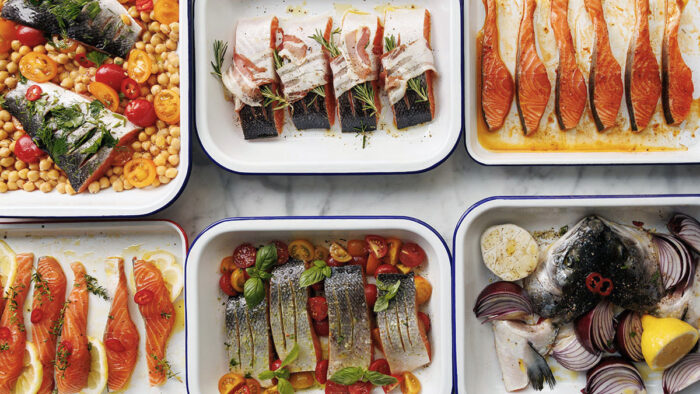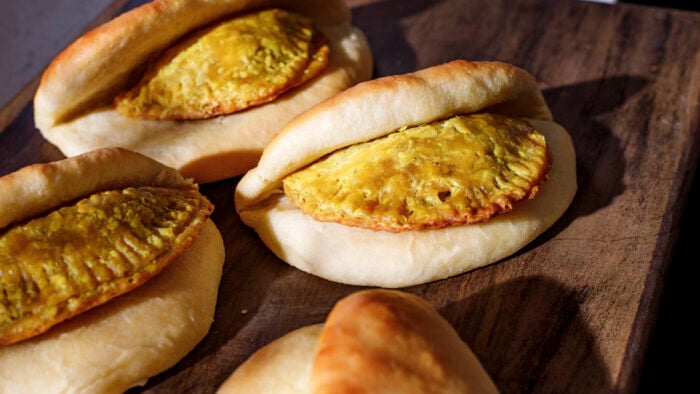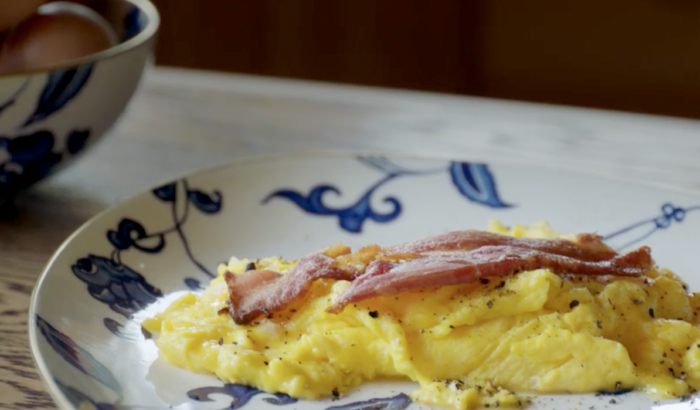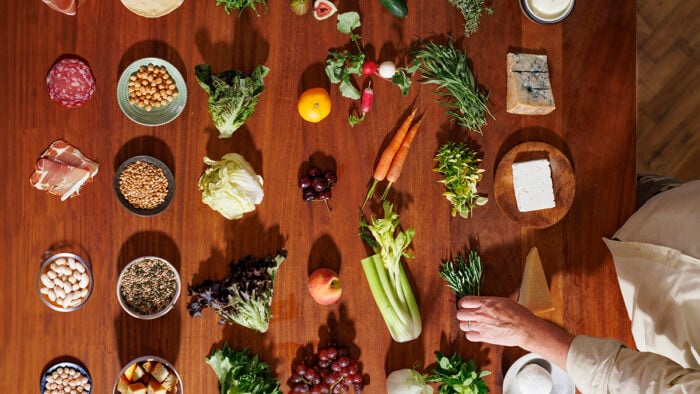
Is YesChef right for me?
Take this quiz to find out.
How to Make the Best Homemade Pasta
Written by the YesChef staff
Share on


Mastering the art of homemade pasta making means being comfortable and confident enough to make fresh pasta by hand. Making fresh homemade pasta is a simple process requiring nothing more than flour, a rolling pin, and a knife – along with a little time and patience. No advanced technology like a KitchenAid stand mixer or food processor is required for this rewarding and meditative process – and the payoff is a fresh homemade pasta dough that is highly superior to the store bought pasta you find at your local supermarket.
To make pasta dough at home, Silverton recommends using a large surface and an extra long and sturdy wooden rolling pin. A sharp knife or pizza cutter will allow you to cut dough into even strips of any level of thickness (which depends on the type of fresh pasta you’re making).
Get Access to an Ever-Growing Library of Classes
Every Subscription includes:
- Unlimited Streaming of all Classes
- Watch on your phone, tablet or laptop
- Story-driven Classes, Practical Lessons
- Recipes with Step-by-Step Guidance
- 30-day Satisfaction Guarantee
- New Lessons added all the time
€9.30/mo
Billed annually

Best Flour for Making Pasta by Hand
According to chef Nancy Silverton and countless Italian nonnas, the best flour for making fresh homemade pasta by hand is a mix of semolina flour and 00 flour. Semolina is ground from strong durum wheat. It has a coarse texture, golden color, and is very high in gluten, which gives homemade pasta dough extra chew. 00 Flour – also known as doppio zero or pasta flour – is a variety of soft white wheat that is elastic and very finely milled. If you want to cook fresh pasta but don’t have – or can’t find – 00 flour, you can use less expensive, all-purpose flour from your local grocery store instead.
In the lesson, Nancy is shown the techniques of fresh homemade pasta making from Bruna Strappaghetti and Stefania Belfico, chefs of Risotrante Masolino in Panicale, an ancient hilltop village in the Umbria region of Italy. These two Italian nonnas divulge to Nancy their pasta recipe secrets on how to make homemade pasta by hand, with a particular emphasis on the art of making tagliatelle, a traditional variety of Italian pasta.
Making Homemade Pasta without a Machine
Mastering the art of homemade pasta making means being comfortable and confident enough to make fresh pasta by hand. Making fresh homemade pasta is a simple process requiring nothing more than flour, a rolling pin, and a knife – along with a little time and patience. No advanced technology like a KitchenAid stand mixer or food processor is required for this rewarding and meditative process – and the payoff is a fresh homemade pasta dough that is highly superior to the store bought pasta you find at your local supermarket.
To make pasta dough at home, Silverton recommends using a large surface and an extra long and sturdy wooden rolling pin. A sharp knife or pizza cutter will allow you to cut dough into even strips of any level of thickness (which depends on the type of fresh pasta you’re making).
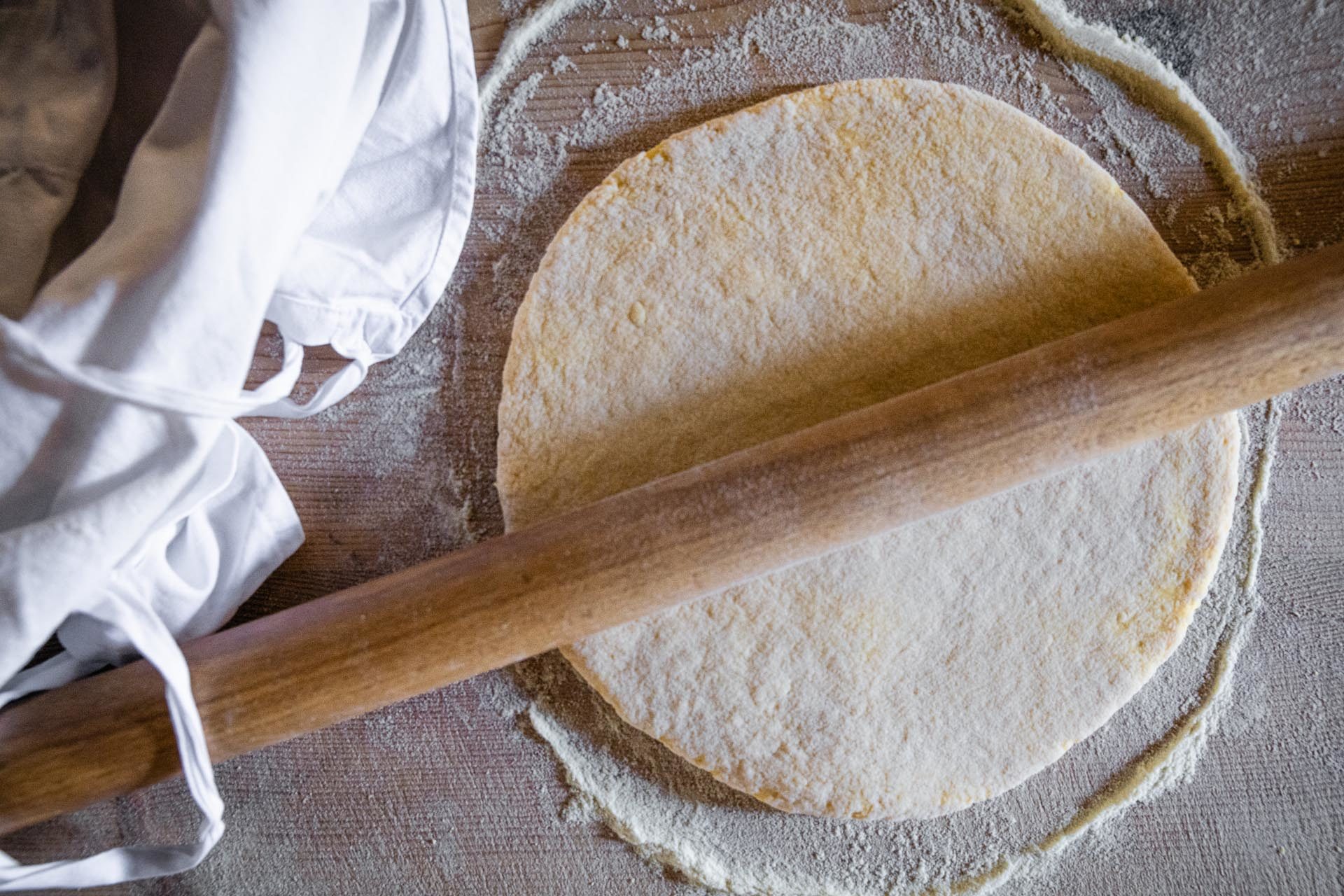
Cooking fresh pasta
Unlike dried pasta, fresh pasta only takes a few minutes. For the best flavor, cook the pasta in a large pot of salted boiling water. Use silicone tongs to remove the fresh pasta noodles from the water and transfer directly into the sauce. Add a ladle or two of pasta water to help cling the sauce to the noodles.
To really allow the homemade pasta noodles to shine, we recommend simple sauces such as pesto, garlic and oil (aglio e olio), cacio e pepe, or carbonara.
How to store fresh pasta
For cut pasta, like tagliatelle, you can either air dry or freeze the pasta. To do so, place small nests of fresh pasta noodles on a parchment lined baking sheet dusted with some semolina flour.
Air Dry: Leave out on your kitchen counter until completely dry, usually overnight. Store in an airtight container for up to 1 month.
Freeze: Freeze for 1 hour, then transfer to a plastic freezer storage bag or airtight container. Store for up to 2 weeks. Frozen pasta does not need to be thawed before cooking, just add 1 minute to the cooking time.
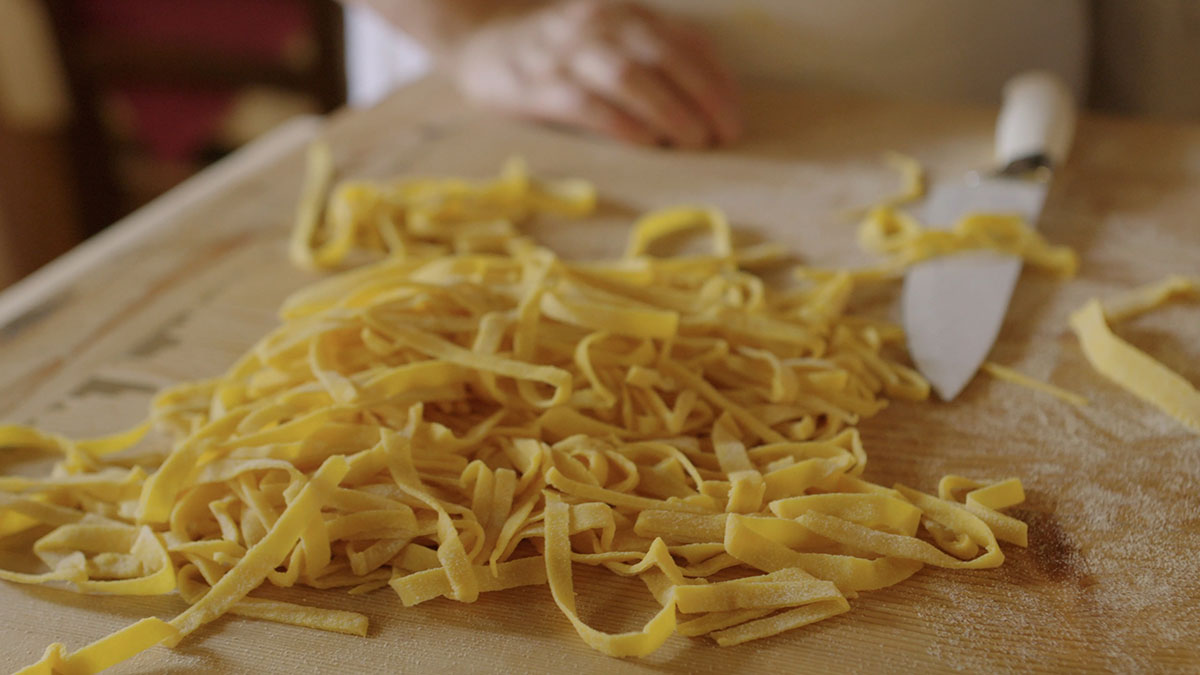
How to Store Fresh Homemade Pasta
For cut pasta, like tagliatelle, you can either air dry or freeze the pasta. To do so, place small nests of fresh pasta noodles on a parchment lined baking sheet dusted with some semolina flour.
Air Dry: Leave the pasta and baking sheet out on your kitchen counter until completely dry, usually overnight. Store in an airtight container for up to 1 month.
Freeze: Freeze for 1 hour, then transfer to a plastic freezer storage bag or airtight container. Store for up to 2 weeks. Frozen pasta does not need to be thawed before cooking; just add 1 minute to the cooking time.
Another Option: A Pasta Machine
A less physically demanding way to make fresh pasta dough is to use a pasta maker or pasta roller. A pasta machine – which can be either hand-cranked or motor-operated – rolls, stretches, and cuts your dough into sheets for you. A pasta machine has different thickness settings, allowing you to set your pasta machine accordingly based on the type of pasta you want. You can also use a stand mixer with a dough hook to make this fresh pasta recipe.
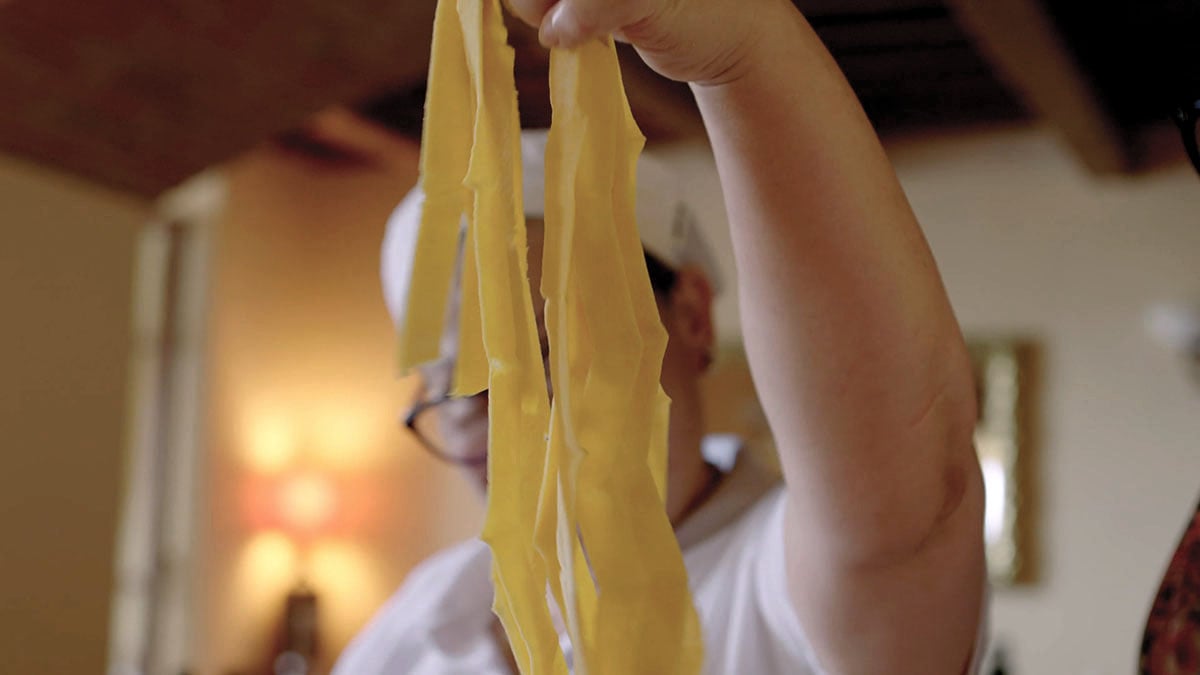
Peperonata with Passata di Pomodoro
Serves:
6
|
Hands-on:
15 min
|
Total:
20 min
Ingredients
- 165 grams semolina (strong durum wheat) flour
- 335 grams 0f flour, or all-purpose white flour, plus more for dusting
- Salt, to taste
- 5 eggs
- Extra virgin olive oil
Gear
- 1 large cutting board
- Fork
- 1 long rolling pin
- Knife
- Dough scraper
- 1 large pot
- 2 bowls
Recipe
- Place the semolina and white flour in a pile on a large clean surface, preferably a wood surface.
- Mix gently in a circular motion with a large spoon and create a well in the middle and add a pinch of salt.
- Break the eggs into the well, add a drizzle of extra-virgin olive oil, and another pinch of salt.
- Slowly whisk the eggs with a fork and add flour from the edges to begin mixing the dough.
- Once eggs and flour have combined, start kneading the dough with your hands. It will be soft at first but will firm as you knead.
- Flatten the ball to a thick disk of dough and add more flour as needed so that the dough doesn’t stick to the surface.
- Using a long rolling pin, roll out the pasta dough to a large sheet of pasta.
- Roll as thin as possible, lifting, and moving the dough constantly to make sure it doesn’t stick.
- Dust some more flour on the large pasta sheet.
- Start folding the pasta sheet in from one side, dusting with flour in between folds.
- When you reach the middle, start folding from the other side, dusting with flour in between folds once again.
- Cut the folded pasta with a sharp knife to your preferred thickness.
- Boil in a large pot of heavily salted boiling water for 4-5 minutes.
- Enjoy with your favorite pasta sauce.


Nancy Silverton
James Beard Award-winning chef, best-selling cookbook author, and the restaurateur behind Michelin-starred Mozza, Nancy Silverton takes viewers on a journey from her home in Panicale, Italy, to her home in Los Angeles. Viewers learn a range of Nancy’s renowned dishes, including her signature Caesar Salad, Chi Spacca Pepper Steak, 10+ vegetarian dishes, Mom’s Apple Pie, and more.
More Articles
How to Make the Best Pita Bread at Home – Perfect for Any Occasion
January 26, 2023
Pasta Bianco
September 18, 2023
How to Make tomato chutney recipe
February 14, 2023
A Celebration of Salad
September 18, 2023
How to Fillet & Prep Fish
September 18, 2023
The Ultimate Grilling Steak Time Chart – Get it Right Every Time!
November 19, 2021

